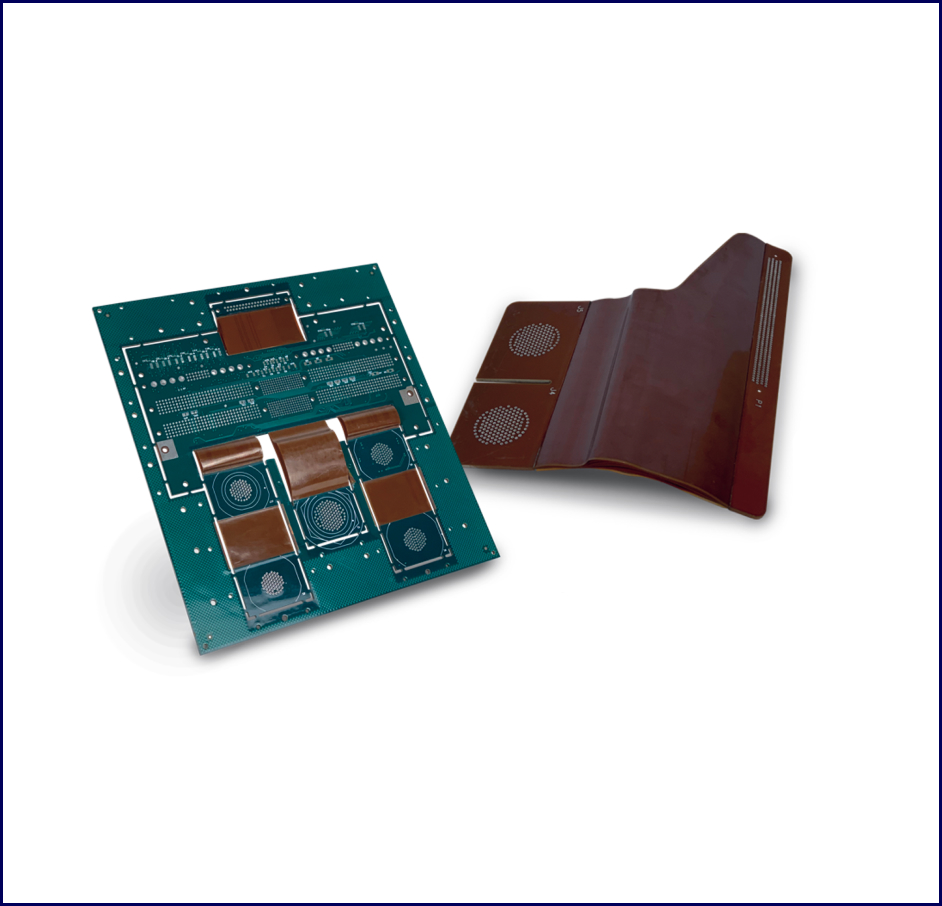Design Services
.jpg) Design high speed digital
Design high speed digital
As data rates increase, so does the need for transmission speed. This can drive signal integrity (SI) quality issues such as crosstalk, reflection and signal loss. At the same time, many products incorporating dense high-speed digital circuitry have rapid product development cycles, which do not allow for the multiple iterations that can be driven by use of an inexperienced design team.
AdvancedPCB’s team of IPC CID+ designers has deep experience dealing with the challenges inherent in this technology. Our highly skilled DFM Engineers can also work directly with your PCB designers or product development staff. Combining the right team with the right tools and services ensures an efficient process that:
- Develops a routing strategy focused on controlling impedance and crosstalk.
- Uses industry vetted and standard layout techniques to optimize signal integrity for your stackup.
- Reviews best-in-class materials to ensure the PCB stackup is optimized for signal and power requirements.
- Coordinates closely with the product development engineering team to ensure all requirements are addressed.
 RF and Rigid Flex
RF and Rigid Flex
Two major trends in electronics are a rising number of products that talk to one another and ever-shrinking product sizes. Not surprisingly, products that use RF technology also are using rigid flex circuitry. From a design standpoint, that drives a number of challenges in the stackup. Not only must the bend area be designed in ways that minimize stress on component solder joints, but the designer also must consider the signal integrity (SI) implications of a design that bends.
AdvancedPCB’s team of IPC CID or CID+ designers addresses these challenges with a combination of adherence to the most current industry-standard design rules and expertise developed over decades of design experience. The AdvancedPCB design team:
- Acts as the hands of the RF engineer, translating product requirements into a working layout.
- Coordinates with the manufacturer to ensure the end design meets both its functionality and manufacturability requirements.
- Works in a gated, collaborative process to reduce layout time and the number of design spins.
High Density Interconnect (HDI)
As printed circuit board (PCB) form factors decrease and functionality increases, the result is a dense packaging challenge that often must incorporate blind and buried vias, laser microvias, via-in-pad and complex stackups. The potential for electromagnetic interference (EMI) to impact design performance is high.
AdvancedPCB’s experienced designers, which have a strong working knowledge of EMI principles, work closely with product engineers to ensure that packaging complexity does not translate into issues in signal or power integrity. This approach to PCB solvability and a focus on electrical integrity and end product manufacturability help ensure a workable layout on the first spin. Key elements contributing to efficient HDI layout includes:
- The team’s ability to match the right tools with the right designers for specific product requirements.
- A commitment to continuous learning that helps ensure the design team is familiar with the latest industry-standard best practices and design rules.
- A collaborative, gated approach that aligns resources with the product development timetable to ensure a working layout is delivered on time and on budget.
- Designers with a robust working knowledge of stackups and utilization of via technology to realize complex routing topologies.
Signal/Power Integrity
There is more than one way to lay out a printed circuit board (PCB). However, there may only be one way that meets a design team’s goals for price and performance. Working with a layout team that can provide a range of options ensures that the best layout and fabrication strategy is pursued.
The AdvancedPCB team of senior-level designers recognizes that its customers want to understand their options and trade-offs as part of the layout and fabrication strategy development process. Their tools for providing this analysis include:
- Signal integrity routing best practices implemented by skilled designers with a history of working on complex SI boards.
- Power integrity is a function of materials, vias and proper management of copper and circuit design. With thousands of design cycles, we understand the complexity of properly implementing supplies and utilizing decoupling techniques that help to ensure your board has a refined power structure.
Services by application area
Defense/Aerospace
AdvancedPCB has extensive experience with commercial and military aerospace projects as well as defense work. Here are a few of the applications for which we’ve provided layout services:
- Aerospace Cockpit Instrumentation
- Aerospace Cyber Security
- Commercial Aerospace Satellites
- Defense Aerospace High Altitude Counter-Measures
- NASA International Space Station - Environment
- NASA Telescopes - Imager and Processor
- Defense Battlefield Telemetry
- Defense Missile Computers
- Defense Ruggedized Computers and Communications
- Defense Satellites Communications
- Imagers
- WiFi and Antenna Designs
Here are some certifications we build in accordance with:
- MIL-PRF-31032
- MIL-PRF-55110
- IPC 6012 Class 3/3A
- AS9100D
- ISO 9001:2015
- ITAR registered
Commercial/Enterprise
Work with an industry leader in PCB manufacturing and assembly due with high standards in quality, performance, and reliability. From medical, industrial, and automotive, to computing, networking, and storage, you can design your boards to spec with ease. See some of our capabilities below:
- Buried Chip Resistors
- Blind and Buried Vias
- Up to 40 layers
- .00275" Trace/Space
- Air Pockets between layers
- Via-in-Pad
- Cavity Boards
- ITAR Registered
- Stacked Microvias
- Laser Drilled Microvias (HDI)
- Laser Direct Imaging (LDI)
- Down to .3mm Pitch
- Heavy Copper (up to 20 oz.)
- Multilayer RF Designs (up to 8 layers)
- Oversized Boards (up to 37" x 120")


